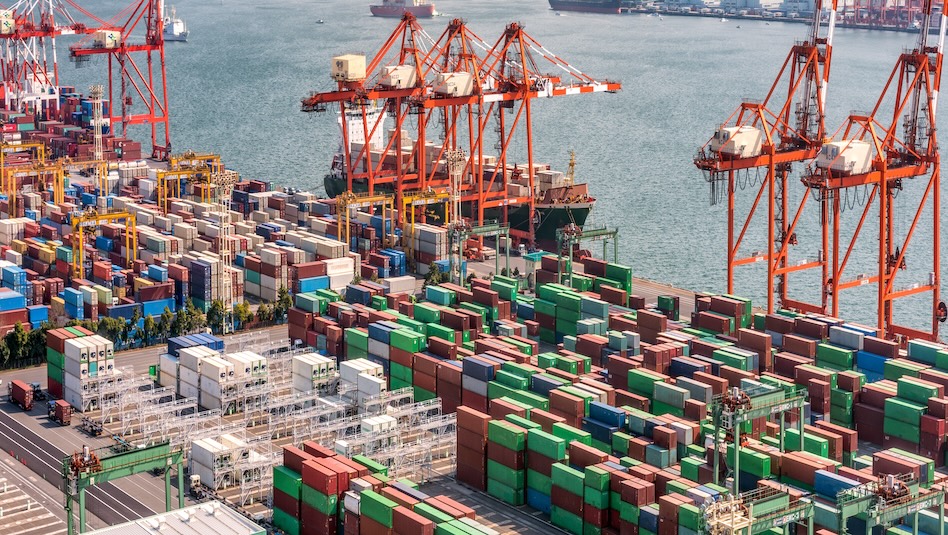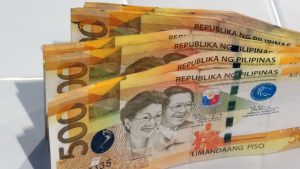




Philippines Trade Update: Exports momentum continues
 DOWNLOAD
DOWNLOAD

Quarterly Economic Growth Release: More BSP cuts to come
 DOWNLOAD
DOWNLOAD

Monthly Economic Update: Fed catches up
 DOWNLOAD
DOWNLOAD


NG debt hits record high P13.7T in January

THE NATIONAL Government’s (NG) outstanding debt hit a record high of PHP 13.698 trillion at the end of January as the government ramped up domestic and external borrowings, the Bureau of the Treasury (BTr) said on Tuesday.
Data from the BTr showed that the outstanding debt jumped by PHP 279.63 billion or 2.1% from the PHP 13.419 trillion at the end of December “due to the net availment of domestic and external debt.”
Year on year, the debt stock rose by 13.9% from PHP 12.03 trillion.
 As of end-January, more than two-thirds or 68.5% of total outstanding debt were from domestic sources, while the rest was from foreign creditors.
As of end-January, more than two-thirds or 68.5% of total outstanding debt were from domestic sources, while the rest was from foreign creditors.
Domestic debt climbed by 12.2% to PHP 9.385 trillion as of January, from PHP 8.368 trillion a year ago. It also inched up by 1.9% from the PHP 9.208 trillion as of end-December 2022.
The BTr attributed the higher domestic debt mainly to “net availment of domestic financing amounting to PHP 179.16 billion offsetting the PHP 2.61-billion effect of local currency appreciation against the US dollar on foreign denominated onshore securities.”
Based on figures from the BTr, the peso appreciated by 2.3% to PHP 54.571 against the dollar from the PHP 55.815 at end-December.
The government mainly borrows from domestic sources to mitigate foreign currency risk.
Meanwhile, external debt increased by 17.8% to PHP 4.314 trillion at end-January from PHP 3.662 trillion in the previous year. Month on month, it went up by 2.4% from PHP 4.21 trillion.
Broken down, external debt consisted of PHP 1.868 trillion in loans and PHP 2.445 trillion in global bonds.
“The increase in NG’s external obligation for January was brought on by the PHP 186.56 billion net availment of foreign loans and PHP 10.36-billion impact of third currency adjustments against the US dollar. However, peso appreciation reduced the peso value of foreign currency denominated debt by PHP 93.84 billion,” the BTr said.
As of end-January, the NG’s overall guaranteed obligations dropped by 1.3% to PHP 393.84 billion from PHP 399.05 billion in the previous month. Year on year, it declined by 6.8% from PHP 422.52 billion.
Analysts said that the increase in debt was due to the government’s recent bond offerings.
“This may have to do with the USD 3-billion global bond offering of the National Government in January,” Rizal Commercial Banking Corp. Chief Economist Michael L. Ricafort said in a Viber message.
The government raised USD 3 billion from a US dollar bond issuance in January, its first for the year.
Mr. Ricafort said that debt could rise further due to the government’s retail Treasury bond (RTB) issuance in February, which raised PHP 283.711 billion.
The government has also signaled a dollar-denominated RTB offering in the second quarter.
Union Bank of the Philippines, Inc. Chief Economist Ruben Carlo O. Asuncion said there was “quite a jump” in debt in January, noting that currency movements have also been noted as important debt drivers.
“My sense is that January usually is a good time to avail of financing opportunities to support economic growth expenditures. Although debt availments are carefully programmed throughout the fiscal year, January is one of the important months,” he said in a Viber message.
Mr. Ricafort also noted that new official development assistance and other multilateral funding for infrastructure projects would also add to the country’s outstanding debt in the coming months.
The government plans to borrow PHP 2.207 trillion this year, where 75% is expected to be sourced domestically.
As of end-December, the country’s debt-to-gross domestic product (GDP) ratio stood at 60.9%, improving from the 63.7% debt-to-GDP ratio as of end-September.
This debt-to-GDP ratio is lower than the 61.8% target under the medium-term fiscal framework, but still above the 60% threshold considered manageable by multilateral lenders for developing economies.
The government is aiming to cut the debt-to-GDP ratio to less than 60% by 2025, and further down to 51.5% by 2028. — By Luisa Maria Jacinta C. Jocson, Reporter
This article originally appeared on bworldonline.com





 By BusinessWorld
By BusinessWorld